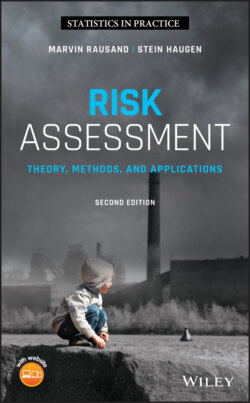Читать книгу Risk Assessment - Marvin Rausand - Страница 153
3.2.3.4 Step 3.4: Determine Frequencies of Events
ОглавлениеThis step is not a part of all risk analyses or may sometimes be performed in a simplified manner. In some cases, the risk analysis is purely qualitative and the description of causes from the causal analysis are then adequate as a description of risk, combined with a description of the consequences. In some cases, frequency or probability classes are used instead of assigning a numerical frequency to each event. Frequency classes may, for example, be specified as /year, per year, per year. Frequency classes are discussed in more detail in Chapter 6.
Assigning frequencies or probabilities may be a difficult task in risk analysis. The data that we have available for this purpose are from the past, whereas we are trying to predict the future. Therefore, the application of data relies on a number of assumptions. The simplest assumption to make (and perhaps most common) is to assume that the past is representative also for the future. Very often, this is not the case, and we need to make assumptions about how we believe that changes in technology and operating context may affect the frequencies or probabilities. Data and data analysis is discussed in more detail in Chapter 9.
In practice, a screening process is conducted also as part of this step. If we conclude that the frequency or probability is very small, we may choose to eliminate the event from further analysis.
